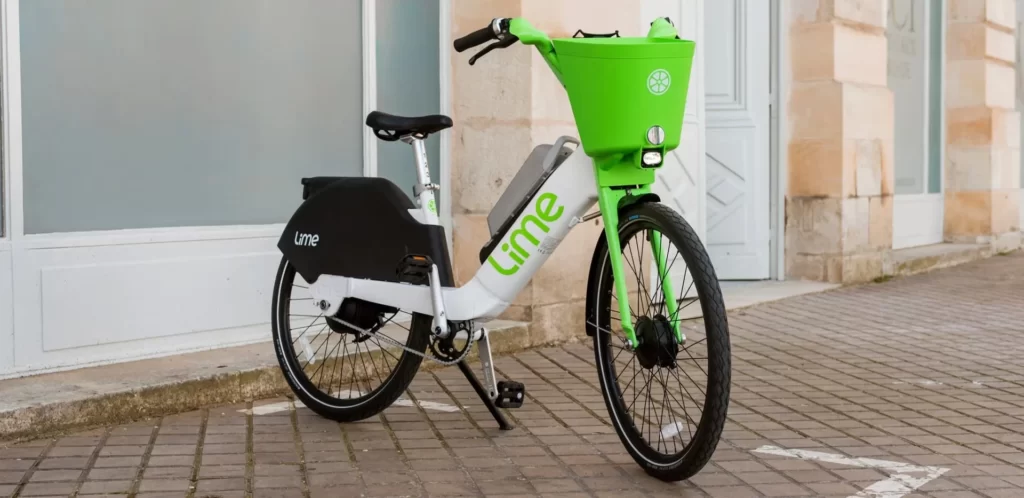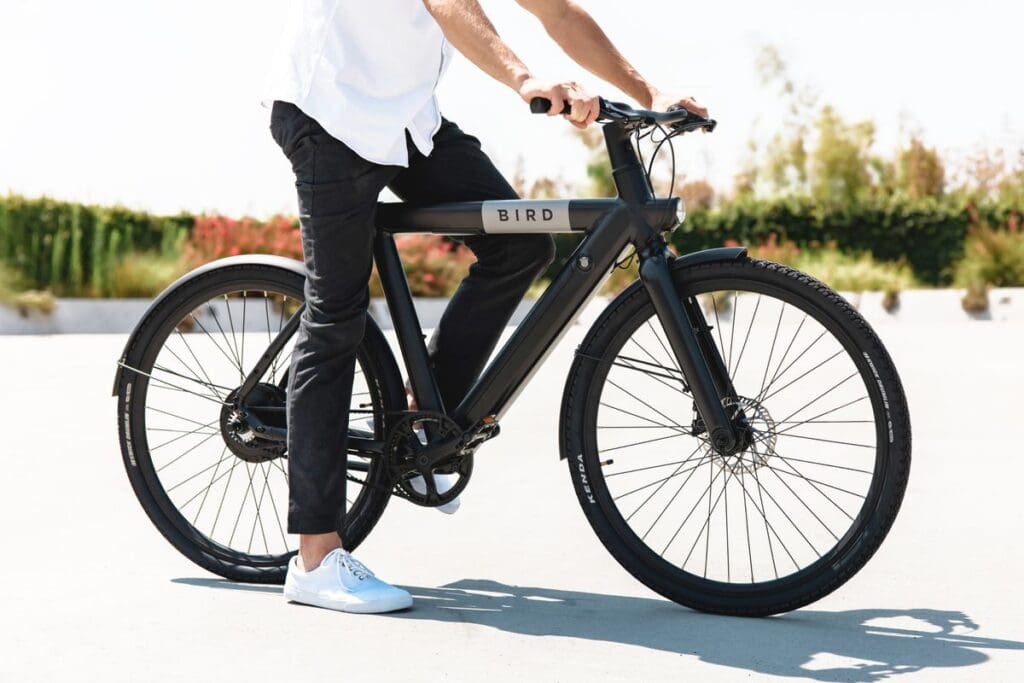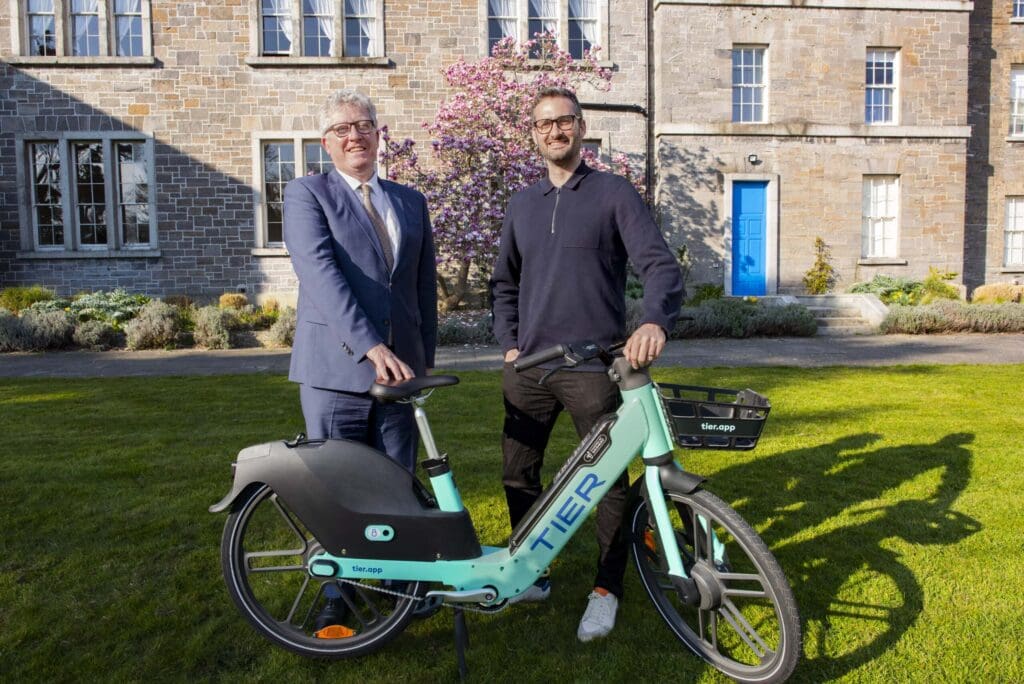Picture this: Your bucket-list trip to London is just a few days away, but you’re hearing about impending transit strikes, and wondering how you’ll manage to traverse the city in the eco-friendly mode you’d planned.
Or, you’re heading to New York City for a business trip in early autumn. The subway is convenient, but on this trip, you’d love to stay above ground and see the city on two wheels.
Maybe you’ve booked a last-minute solo trip to Lisbon (hooray flight deal!) and while riding the No. 28 tram is well, iconic, it’s also packed—and you’d rather keep your social distance.
All of these scenarios have a common solution—micromobility. That is, the bike- and scooter-share programs found across all three of these cities (and around the world).
Micromobility programs empower locals and travelers alike to traverse destinations on their own accord (hint: not at the whim of public transit schedules or worse, strikes), and at their own pace.
Below, I dive further into what micromobility is, its benefits, some common bike- and scooter-sharing programs, plus where you can find them.
What is micromobility?
Micromobility refers to lightweight vehicles, such as bicycles, electric bikes, and electric scooters, that are operated by just one person. In recent years, micromobility has become increasingly popular thanks to the availability of bike- and scooter-sharing programs.
Share programs allow people to rent a bike or scooter for a fee, and return the vehicle when they’ve completed their trip. Many programs charge a flat rate, plus a (small) per-hour fee. Others allow you to rent bikes on a daily or discounted monthly rate—the latter being especially beneficial to those who commute regularly.
Why should I try a bike- or scooter-share program on my next trip?
If you live in or have recently visited a major metropolitan area, chances are you’ve seen people whizzing by on an electric scooter or pedaling along on a colourful, branded bike. Like I mentioned above, micromobility programs seem to have sprouted up just about everywhere—and with good reason!
1. They’re environmentally friendly
Whether you’re choosing micromobility in order to get to work, for fun, for exercise, or to improve your overall mental health, doing so not only benefits you but also the environment. Swapping a car for a bike, e-bike, or scooter helps promote a sustainable world—one with fewer emissions and cleaner air for everyone.
2. They’re convenient
Most bike-share programs offer hundreds of docking locations in the cities they are located in. Often, they can bridge the (mobility) gap in areas without access to public transit. In addition, many scooter-share programs are dockless, meaning you can leave your rental at your final destination without having to locate a drop-off point.
If you do rent a scooter, be mindful of where you leave it after you’ve used it. While there may not be a dock per se, some cities designate scooter parking areas to avoid them being left anywhere (and everywhere).
Also remember to follow all local and safety guidelines, including wearing a helmet when you ride and abiding by all traffic regulations, e.g., where bikes or scooters can and can’t go.

Related reading: What to Do When Your Destination’s in a Transit Emergency
3. They’re cost-effective
As mentioned above, most bike- and scooter-share programs charge a flat rate, plus a (small) per hour fee. For example, rates for Washington D.C.’s bike-share program, Capital Bikeshare, start at $1.00 to unlock a bike, and then $0.05/minute for a bike or $0.15/minute for an e-bike. Day passes are $8.
London’s Santander Cycle bike-share costs £2 for unlimited journeys up to 30 minutes within a 24-hour period. For journeys longer than 30 minutes, rides cost £2 for each additional 30 minutes.
Want to compare costs before you embark on a journey? You can consult alternative transit methods, such as taking a cab or riding the subway, in TripIt’s Navigator feature. Navigator will show you the estimated costs and travel times for each option, so you can decide which works best. You can find Navigator within your plan details screens.
Tip: Always download the bike- or scooter-share app for ease of payment, reserving your ride, keeping track of your journey time(s), and monitoring any leftover balance.
What are some common bike- and scooter-share programs?
Now that I’ve covered the benefits of bike and scooter sharing, let’s get familiar with some of the available programs.
Lime
Lime offers e-bike and e-scooter rentals in more than 200 cities on nearly every continent. The largest electronic micromobility platform in the world, Lime’s four core principles support safety, sustainability, community, and innovation.
As part of its mission to support communities and mobility for all, Lime also offers an on-demand service program, called Lime Able, that delivers “vehicles [that] are uniquely designed to meet a wide spectrum of abilities.” These adapted vehicles are available to Lime riders at no cost in select cities.

Now part of Lime, JUMP is an electric bike-share program offered through Uber. At the time of publication, shiny red JUMP e-bikes are still available to rent directly in the Uber app. That is, if one is available in your area, you’ll see it as an option in the app. (Otherwise, you might see a Lime bike.)
Get started by downloading the Lime (or Uber) app, and then follow the instructions to begin your journey.
Bird
Bird offers e-bikes and e-scooters in over 350 locations in the U.S., Canada, Europe, and the Middle East.
Of note, Bird’s Bird Three scooter is “designed for the circular economy.” According to their site, the scooter’s “eco-conscious design and construction maximizes lifespan, minimizes waste and increases second life and recycling opportunities.”
Simply download the Bird app to locate or reserve your ride. You can reserve an e-bike or scooter up to 30 minutes in advance of your journey.

TIER
Berlin-based TIER offers micromobility options in many cities across Europe and the Middle East. In addition to e-bikes and e-scooters, TIER also offers e-mopeds.
As with other sharing programs, you’ll want to download the app and follow the steps before you get started.

Tip: Remember to forward your confirmation email to [email protected] so you’ll know where you picked up your bike or scooter (in case you plan to return it to the same docking station), and to check out nearby destinations in TripIt’s Map View.
What destinations offer micromobility programs?
Planning a trip and curious to see what’s available by way of micromobility? Here’s an A to Z (but by no means comprehensive) guide to cities with avid micromobility program usage.
Amsterdam > In the unofficial biking capital of the world, check out bike-share programs Hello-Bike, Urbee, and Cargoroo. There are also myriad bike rental shops to choose from.
Boston > Bluebikes, Boston’s public-private partnership with Blue Cross Blue Shield of Massachusetts, offers fun and cost-effective way to explore the city.
Chicago > Divvy Bikes, Chicago’s bike-share program powered by Lyft, offers single-ride passes, day passes, as well as an annual membership for local residents.
Detroit > MoGo, Detroit’s public bike-share program, offers more than 600 bikes and 75 stations across metro Detroit.
Eindhoven > Bike-share program Hopper and TIER are both available in this Dutch city.
Frankfurt > nextbike is a Europe-based bike-share program, and all bikes are made in Germany. One of its benefits is the ability to rent up to four bikes on a single account; group rides are made easy! Lime and TIER are also available in Frankfurt.
Gothenburg > Styr & Ställ, Gothenburg’s bike-share program powered by nextbike, has over 130 stations around the city. Bird and TIER are also in Gothenburg.
Heidelberg > VRNnextbike, Bird, and TIER are all available in Heidelberg.
Indianapolis > Pacers Bikeshare bikes and adaptive trikes, as well as Lime and Bird, are available in Indy.
Jersey City > Citi Bike, powered by Lyft, is available in Jersey City and Hoboken, New Jersey, as well as across NYC.
Kansas City > Explore with RideKC Bike pedal bikes and e-bikes. Bird is also available in KC.

London > Santander Cycles has 800 docking stations and 12,000 bikes in circulation and is available 24/7/365.
Manhattan > Citi Bike, powered by Lyft, is NYC’s official bike-share program. Riders can access bikes in the Lyft or Citi Bike apps. Single rides in the app start at $3.99/trip. Lime is also available in New York.
New Orleans > After a one-time sign-up fee of $1.00, Blue Bikes Nola rides cost $.15 per minute. Download the Blue Bikes app to sign up, find and reserve a bike, and more.
Oslo > Oslo City Bike is the city’s bike-share program and offers single-ride, day, monthly, and season passes. Bird and TIER are also available in Oslo.
Paris > Vélib’ Métropole bike-sharing program has more than 20,000 bikes (40% of them electric) and over 1,400 docking stations. Lime and TIER are also available in Paris.
Queens > Citi Bikes are available in all five of New York’s boroughs (including Queens).
Rome > Helbiz, Cooltra, Zigzag, Lime, Bird, and TIER all offer micromobility options in this Italian city.
San Francisco > Bay Wheels, provided by Lyft, is SF’s bike- and e-bike-share program. Rides start at $3.49 per ride. Lime and Bird are also available in the city.
Tel Aviv > Tel-O-Fun is Tel Aviv’s bike-share program. E-bikes and pedal bikes are available to rent. Bird and TIER are also available here.
Ulm > The German city, perhaps best known for its car-sharing scheme, offers bike and scooter sharing through Bird and TIER.
Vienna > Lime, Bird, and TIER are all available in Vienna.
Washington, D.C. > Capital Bikeshare stations are located throughout the DMV—i.e., the D.C., Maryland, and Virginia region—with more than 600 stations and 5,000 bikes and e-bikes. Lime and Bird are also available in D.C.
Xanthi > Rent a bike in the Greecian city of Xanthi via GrCycling.
York > TIER is available in the British city of York.
Zurich > Lime, Bird, and TIER are all available in Zurich.
DYK? TripIt’s City Break guides include tips for getting around your destination, including eco-friendly methods like public transit and bike- and scooter-share programs.
The post Micromobility Programs: A Beginner’s Guide to Bike and Scooter Sharing appeared first on TripIt Blog. For more on travel.

